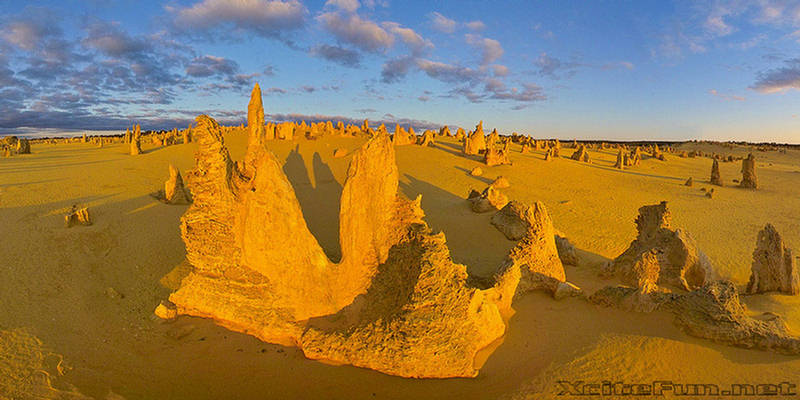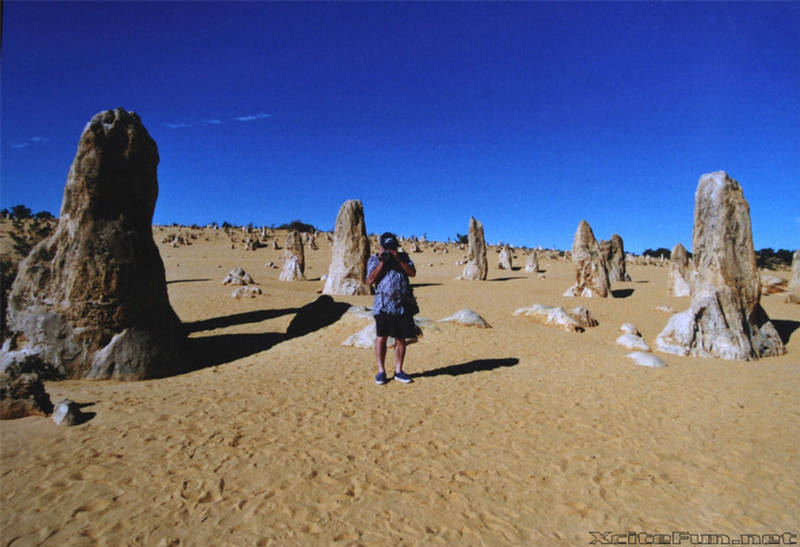
This also helped to create an acidic layer of soil over the top of the dune, which further contributed to the leaching of the lime from the soil. A layer of calcrete formed over the soft limestone under the dunes. Small cracks in this hard layer allowed plants to send down deeper roots, which had the side-effect of allowing water to flow in also, gradually eroding the soft limestone beneath. This was replaced by quartz sand from the dune above. This continued until only columns of limestone that sat protected from the encroaching water remained. These columns were exposed when the vegetation on top of t e dune died, allowing the wind to blow away the dune and sand between from between them.

The Pinnacles is contained within Nambung National Park, near the town of Cervantes, Western Australia. The Pinnacles are limestone formations. The raw material for the limestone of the Pinnacles came from seashells in an earlier epoch rich in marine life. These shells were broken down into lime rich sands which were carried inland to form high mobile dunes.

The Pinnacles were formed from lime leaching from the sand and by rain cementing the lower levels of the dune into a soft limestone. Vegetation forms an acidic layer of soil and humus. A hard cap of calcrete develops above the softer limestone. Cracks in the calcrete are exploited by plant roots. The softer limestone continues to dissolve. Quartz sand fills the channels that form. Vegetation dies and winds blow away the sand covering the eroded limestone, thus revealing the Pinnacles.



